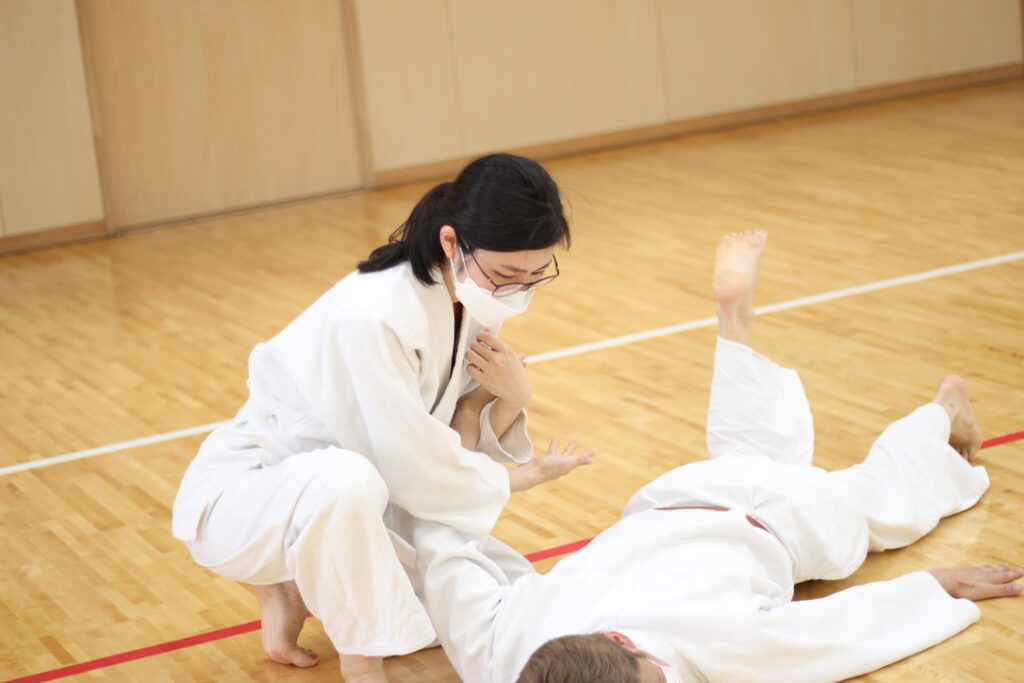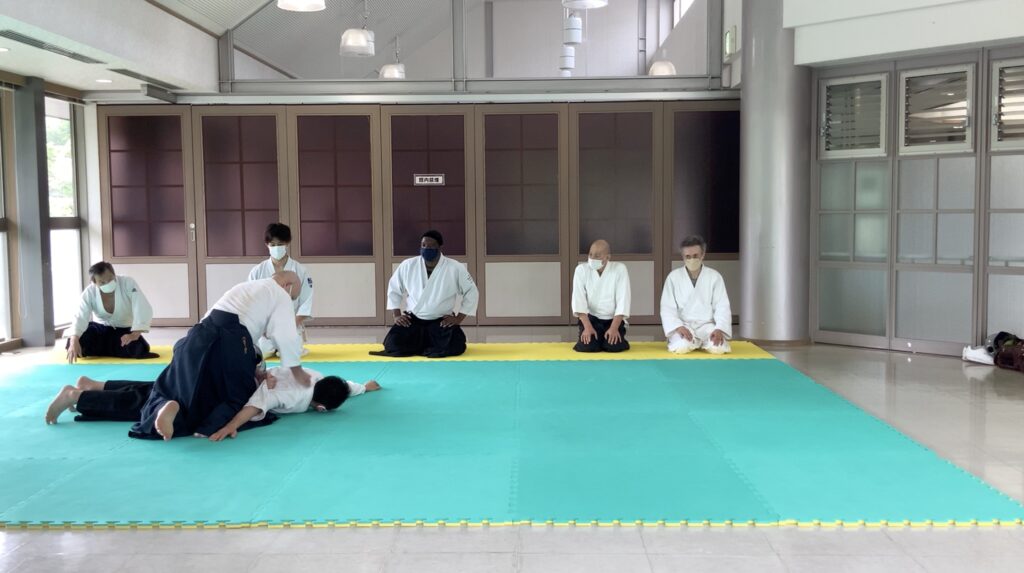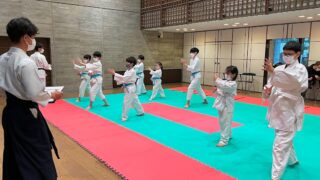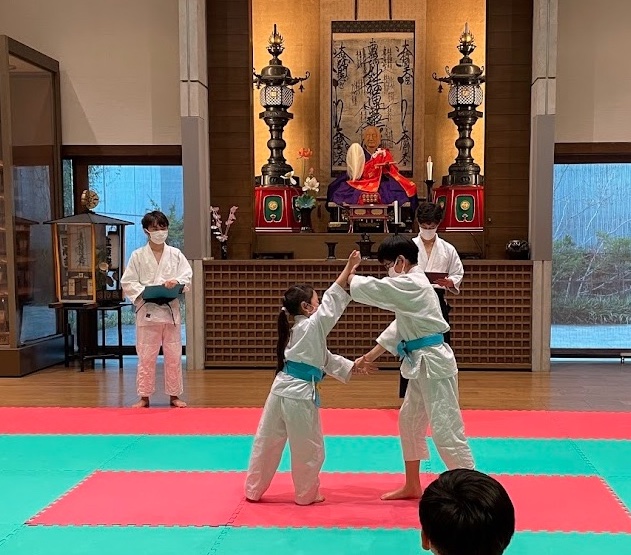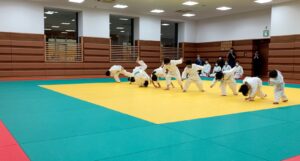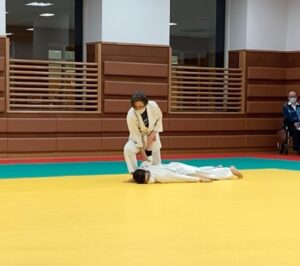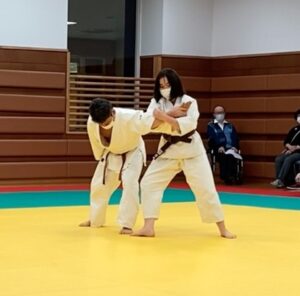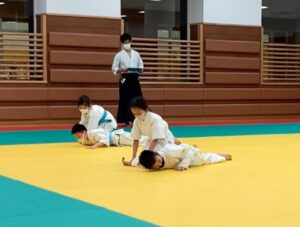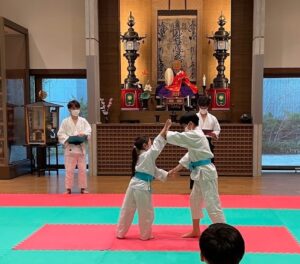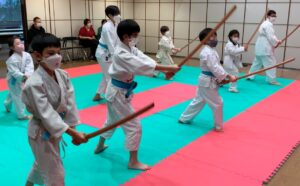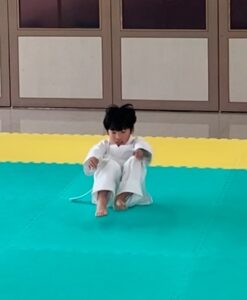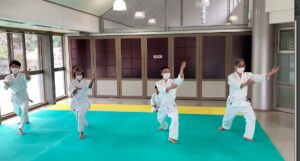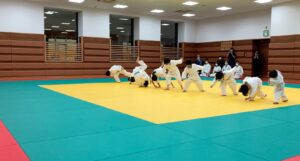At MUGEN JUKU, adults with various professional backgrounds and talented children are trying to overcome daily challenges and enrich their lives by learning aikido. The first "Student Interview" is with Hazuki, who has been practicing aikido for three years. We asked this young woman, who works at a publishing company, why she took up aikido and what she has gained from it (text and photos by Sugawara).
Yoshinkan Aikido 5th kyu, 3 years of Aikido experience. He had zero sports experience before joining. He usually works for a foreign-affiliated publishing company. Hobbies include reading, watching movies, and creating illustrations.
I admire the women in Hakama who appear in dramas.
--What made you start aikido?
I became interested in aikido at a time when my job had just changed from sales to in-house work, and I had more time and energy to spare.
Until then, my days were spent working until 9:30 p.m. as a salesperson, and on weekends I would rather sleep than exercise. That all changed, and I am now in a situation where I am not tired on a daily basis.
Then I was thinking about doing something with my free time, and while watching a drama, I saw an actress wearing hakama and doing aikido for a short time. I saw it and thought, "Cool! I thought. I have always loved kimonos and other Japanese clothing, so I had a longing to wear hakama.
--Was there anything other than aikido that you considered as a contradiction of energy?
I had always been a swimmer since I was a child, but I knew that swimming, which I did silently and alone, was not for me now. Aikido was the only way for me to be able to relate to others in a moderate way and to easily understand the next step.
I also thought about playing in a brass band, which I had experience in the past, but I finally decided on aikido because I didn't want to inconvenience others by taking time off when I got busy with work or hobbies if it was a team activity.
When Corona calmed down a bit and the dojo reopened, he immediately returned to training. The techniques that were awkward at first are now performed without difficulty.
You don't have to worry about winning or losing. I can focus on my inner self.The following is a list of the most common problems with the
--Keep practicing.3It has been two years. Why do you think you continue to do aikido?
I think it is because in aikido there is no winning or losing, no "I have to beat everyone! I think it is because aikido is not about winning or losing, and you don't have to worry about who you are going to beat. Therefore, I can face my inner self. It is very fun to be able to do techniques that I couldn't do before, and to be able to do them one by one.
I also think that because it is an individual sport, it can be combined with other hobbies. It is better if there is no compulsion. I draw and write as hobbies, but it is difficult when training coincides with events and deadlines. At that time, I reduce the frequency of my aikido practice a little to keep a good balance. It is also a relief that MUGEN JUKU TOKYO has a pay-as-you-go plan.
--You are always keeping busy and balanced. Don't you ever get tired?
I am the type of person who has a sense of frustration about not doing anything. Maybe it's because I've been learning every day since I was little (lol).
Also, when I was in college, I was in an international liberal arts department, where 2/3 of the faculty were returnees and international students, and I was the 1/3 that was not.
I thought I was good at English in my hometown, but I found myself in an environment where there were many people who could do it far better than I could, and I learned the importance of competing on a different playing field. So I think I was always doing something to improve myself.
Aikido and no need for massage?
--You have been enthusiastic about aikido. Have you noticed any changes in your daily life?
First of all, I think it is significant that my posture has improved.
I work at a desk now and then, so my body gets stiff. So I have to go for massages regularly because my shoulders and back are painful.
But after I started Aikido, people around me praised my posture a lot more, and after a while I found myself not needing to go for massages. Even when I am working normally, I don't feel pain anymore, or rather, I don't feel in a negative state anymore.
--There are so many people who want to improve their posture. Did you improve your posture just by practicing?
In the words of Shioda-sensei, the founder of the school, "All times, all circumstances, this is the best dojo," right?
The phrase "not only on the tatami mats, but also in everyday life is aikido training. I think it is significant that I have become aware of this and spend my daily life with it in mind. I am careful about how I stand, such as correcting my hunchback when I am on the train.
I'm less likely to get tangled up in the streets when I'm imposing.
--Have you done anything else good with your posture?
My posture has improved and I am noticeably less likely to get tangled up with strange people on the street or on the train. It is not that I repel them with aikido (laugh), but probably because I stand tall and proud.
--Do you talk about aikido with people around you?
I have many opportunities to talk with people from overseas for work, and this is a great story to impress them. When chatting before a meeting starts, talking about aikido is ironclad! I tell people who are interested that it's a training to focus their attention - it's a training to focus their attention. Since the topic is not covered, they remember it right away.
I will do my best to wear hakama!
--Finally, can you tell us about your future aspirations?
My immediate goal is still to obtain Shodan, which will allow me to wear Hakama. To achieve this, I would like to continue for a long time while balancing my work and other commitments.
We would like to support everyone so that more and more women can join us.
--Thank you very much! I think that once I get Shodan, I will see the depth of Aikido again and get into it even more!
Yes, I will! I will do my best!

